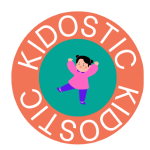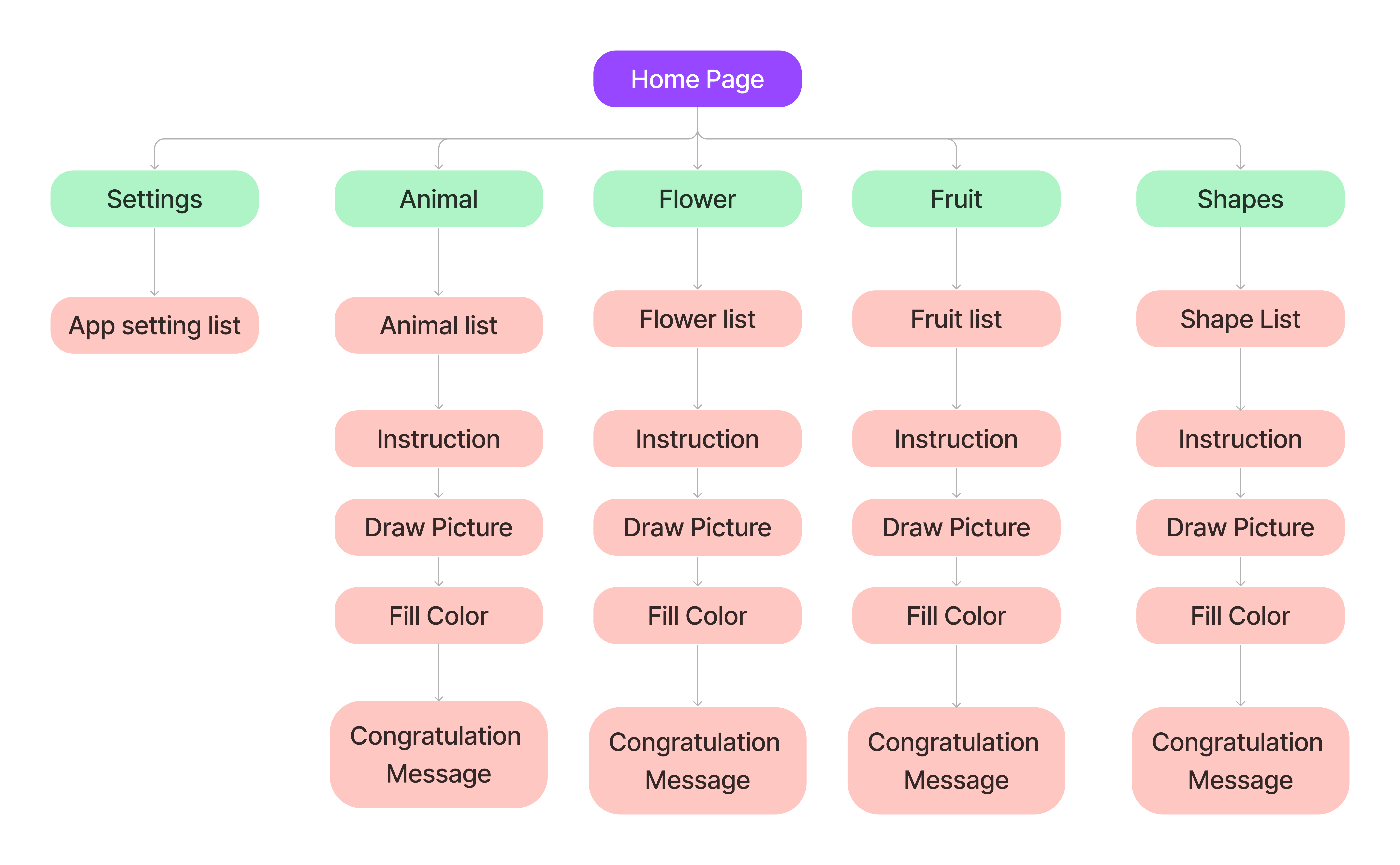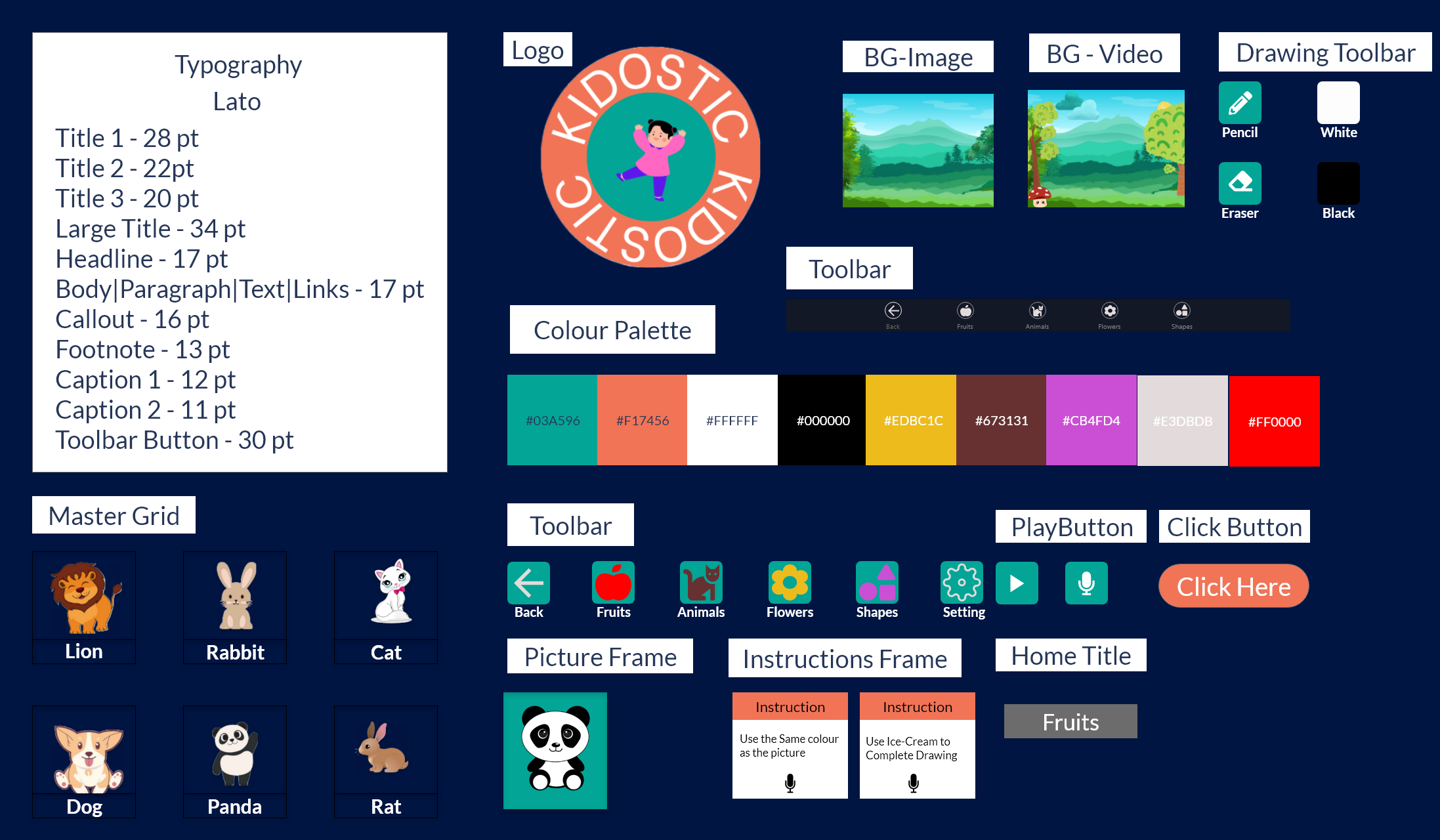
Year : 2023
Disciplines : UI/UX Design – Prototype
Goal/Purpose : High-Fidelity Prototype
Project Type : Academic
Software/Tools : Adobe XD , Canva , Photoshop
Project Contribution : Individual
Testing Link : Kidostic
Interactive Design
(speech playback is not supported in browser click on testing link provide to listen)
THEME:
Kidostic
PROJECT DESCRIPTION:
Using pictures, this app aids children in learning names. This project’s major objective is to learn while having fun.
Task-based Scenario: The little child wants to learn the name and to color in a picture of it by matching them to its image.
BACKGROUND:
Children may learn the names of animals, flowers, shapes, and fruits using a learning app from Kidostic, and they can also feel the color of the objects. They can pay attention and comply with the directive to view the reference picture. The volume and other app-related settings can be changed by parents.
GOAL:
The goal was to create a iPad Application High-Fidelity Prototype using Adobe XD covered in MDIA 2330–UI/UX/XD. The main purpose of iPad Application High-Fidelity Prototype project is to show case student’s understanding of how to use the Adobe XD effectively.
APP FLOW:
Created App Flow to understand the flow of this iPad application.

APP FLOW:
I made the decision to come up with a brand name for the Kidostic iPad app before designing the logo. I looked through numerous brand names, but I settled on “Kidostic” because it is so distinctive and showcases the essence of the iPad app. I concentrated on making sure the name related to the business so that people could quickly identify it.
LOGO DESIGN:
I put a lot of thought and effort into developing a logo that aligns with brand identity and appeals to app target audience. By using descriptors that match brand attributes and sketching multiple concepts, I was able to hone in on a design that effectively communicates app’s purpose. Incorporating a circle shape and a fun, kid-friendly image is a great way to make the logo visually appealing and easily recognizable. I also use colors that indicate the app is for a game, which can help attract target audience and convey the app’s purpose at a glance. Overall, I have created a well-designed logo that effectively represents brand and appeals to target audience.

UI KIT:
The application’s UI Kit is a collection of already-existing UI components that serves as a resource for the design cooperation and future creation. It will be updated whenever there is a redesign because it is a dynamic document.

HIGH-FIDELITY WIREFRAMES:
The main purpose of website High-Fidelity Prototype project is to show case student’s understanding of how to use the Adobe XD effectively. I generated high-fidelity wireframes by implementing defined styles. It also enables me to assess the application’s better visual feelings and aesthetic consistency.
CONCLUSION:
I have developed a Hi-Fi interactive design iPad app for toddlers that focuses on teaching about flowers, animals, shapes, and fruits. iPad app is likely to be a fun and engaging way for toddlers to learn about important concepts such as animal names, fruit varieties, different shapes, and various types of flowers. By incorporating Hi-Fi interactive design elements, I have made the app more user-friendly and engaging for young children, which can help improve their learning experience. With the use of interactive graphics and animations, toddlers can easily navigate the app and explore the different content. The app can also include the feature of a simple game, which can help reinforce their learning and make the experience more enjoyable. Overall, the iPad app is likely to be an excellent tool for toddlers to learn about important concepts and can help them develop their cognitive and developmental skills. The app may help young children to enjoy the learning process and keep them engaged while learning, which can be a valuable asset for parents and educators.
